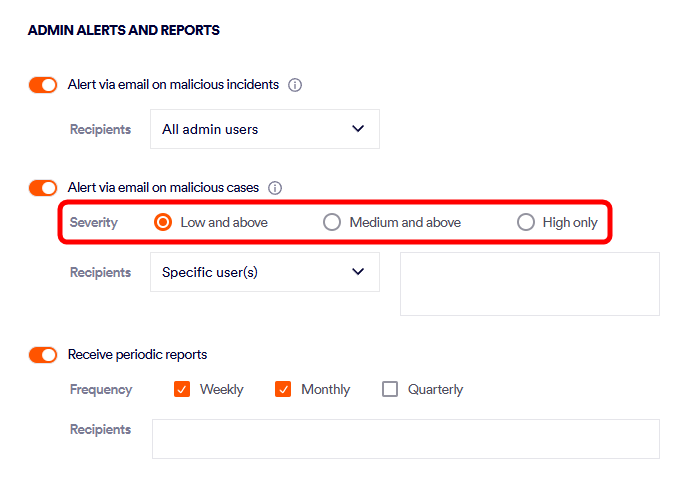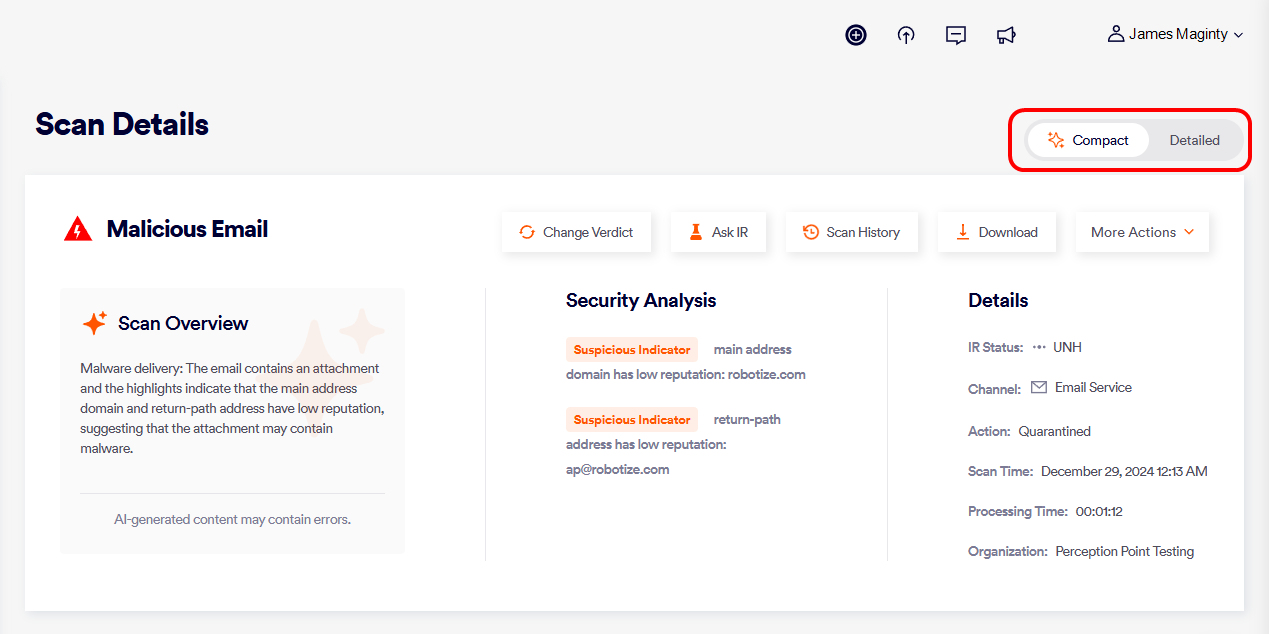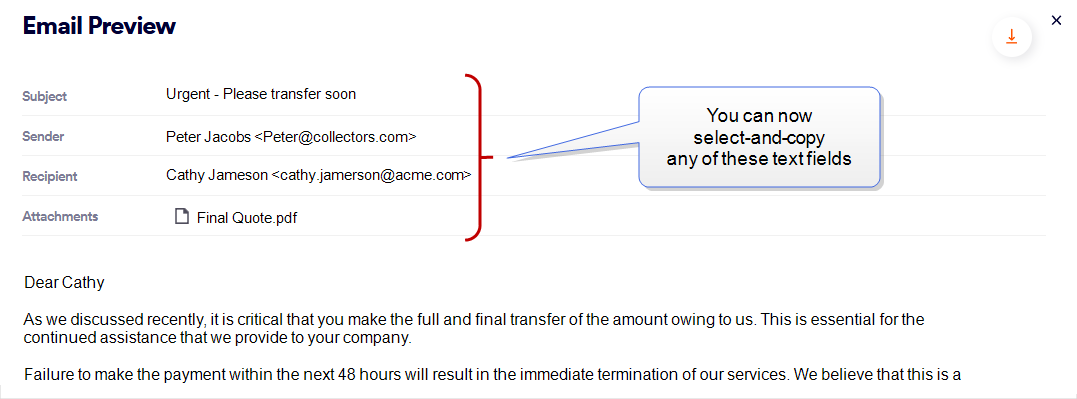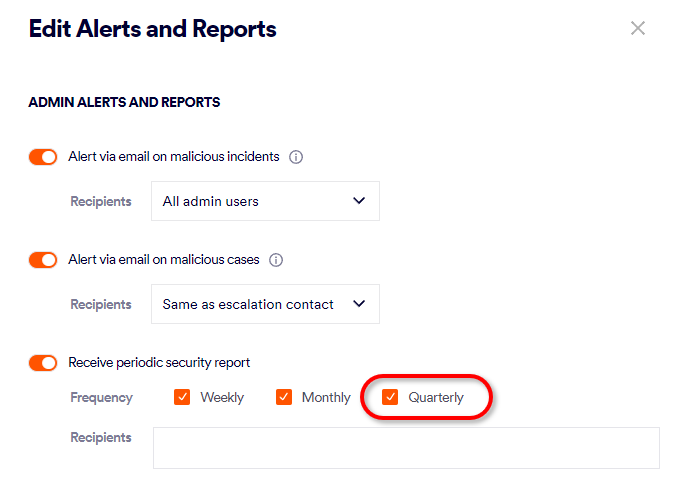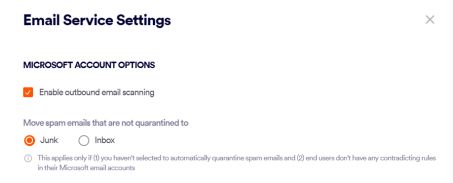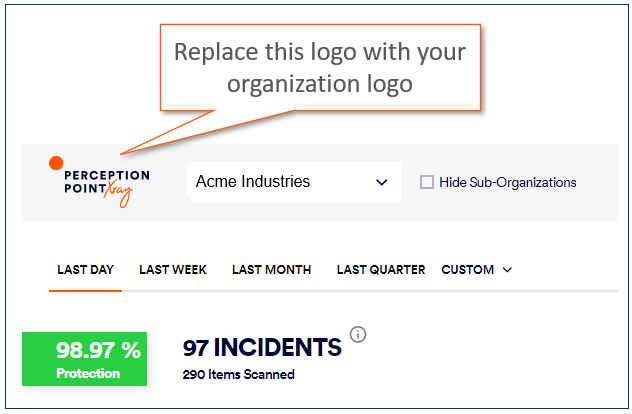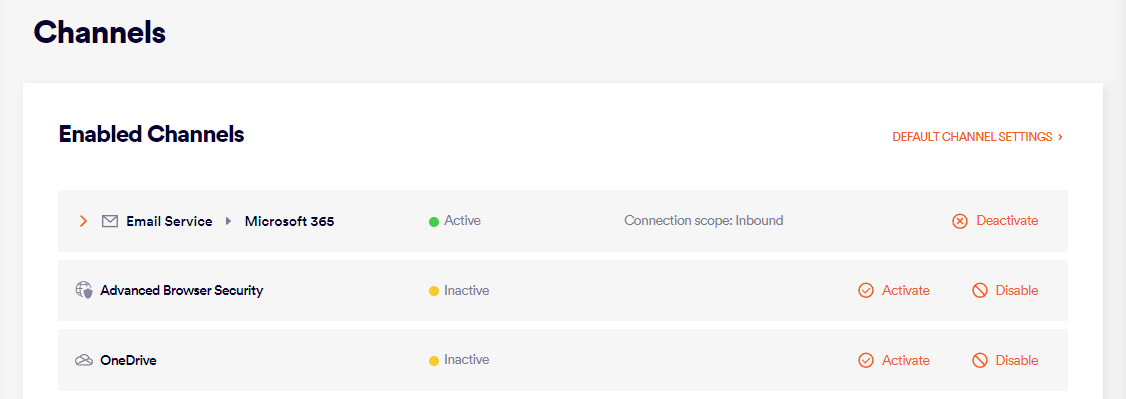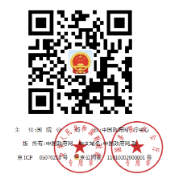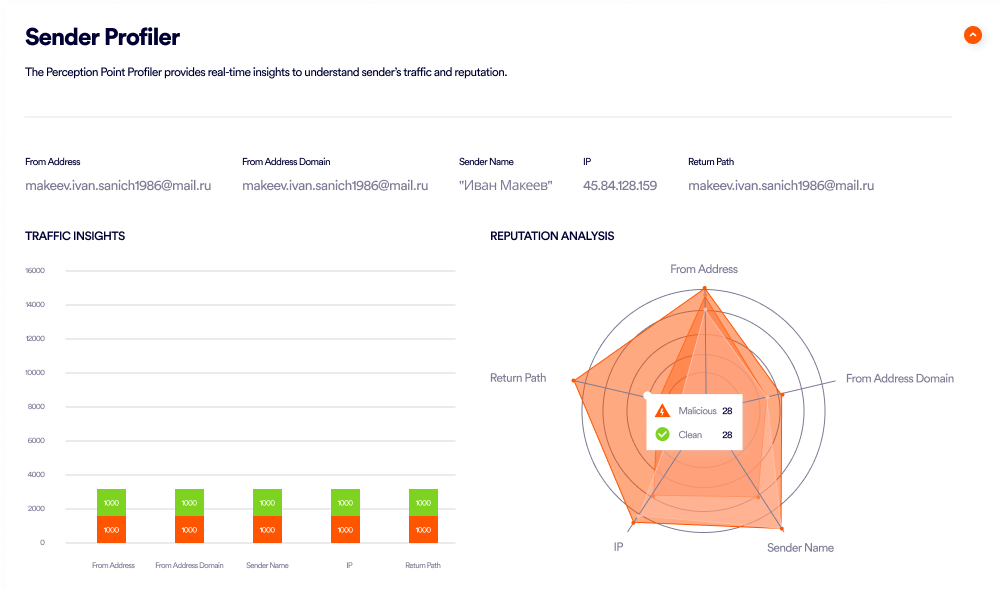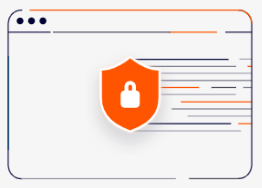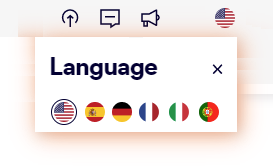
|
Here's what's new in "Acronis Email Security"... |
|
Release Date |
Here's what we added or changed... |
||||||||||||
|---|---|---|---|---|---|---|---|---|---|---|---|---|---|
|
26 October 2025 |
|
||||||||||||
|
26 October 2025 |
|
||||||||||||
|
26 October 2025 |
|
||||||||||||
|
22 October 2025 |
|
||||||||||||
|
21 October 2025 |
|
||||||||||||
|
21 October 2025 |
|
||||||||||||
|
20 October 2025 |
|
||||||||||||
|
14 October 2025 |
|
||||||||||||
|
23 August 2025 |
|
||||||||||||
|
15 August 2025 |
|
||||||||||||
|
14 August 2025 |
|
||||||||||||
|
28 July 2025 |
|
||||||||||||
|
21 July 2025 |
|
||||||||||||
|
20 July 2025 |
|
||||||||||||
|
8 July 2025 |
|
||||||||||||
|
18 June 2025 |
|
||||||||||||
|
14 May 2025 |
|
||||||||||||
|
14 May 2025 |
|
||||||||||||
|
11 May 2025 |
|
||||||||||||
|
31 March 2025 |
|
||||||||||||
|
31 March 2025 |
|
||||||||||||
|
25 March 2025 |
|
||||||||||||
|
19 March 2025 |
|
||||||||||||
|
9 February 2025 |
|
||||||||||||
|
3 February 2025 |
|
||||||||||||
|
23 January 2025 |
|
||||||||||||
|
23 January 2025 |
|
||||||||||||
|
3 January 2025 |
|||||||||||||
|
3 January 2025 |
|
||||||||||||
|
1 January 2025 |
|
||||||||||||
|
18 December 2024 |
|
||||||||||||
|
17 December 2024 |
|
||||||||||||
|
10 December 2024 |
|
||||||||||||
|
8 December 2024 |
|
||||||||||||
|
14 November 2024 |
|
||||||||||||
|
4 November 2024 |
|
||||||||||||
|
7 October 2024 |
|
||||||||||||
|
10 September 2024 |
|
||||||||||||
|
22 August 2024 |
|
||||||||||||
|
29 July 2024 |
|
||||||||||||
|
21 July 2024 |
|
||||||||||||
|
29 July 2024 |
|
||||||||||||
|
23 July 2024 |
|
||||||||||||
|
22 July 2024 |
|
||||||||||||
|
22 July 2024 |
|
||||||||||||
|
5 June 2024 |
|
||||||||||||
|
14 May 2024 |
|
||||||||||||
|
28 April 2024 |
|
||||||||||||
|
18 April 2024 |
|
||||||||||||
|
18 April 2024 |
|
||||||||||||
|
14 April 2024 |
|
||||||||||||
|
24 March 2024 |
|
||||||||||||
|
21 February 2024 |
|
||||||||||||
|
14 February 2024 |
|
||||||||||||
|
14 January 2024 |
|
||||||||||||
|
30 January 2024 |
|
||||||||||||
|
23 January 2024 |
|
||||||||||||
|
23 January 2024 |
|
||||||||||||
|
14 January 2024 |
|
||||||||||||
|
28 December 2023 |
|
||||||||||||
|
28 December 2023 |
|
||||||||||||
|
14 December 2023 |
|
||||||||||||
|
14 November 2023 |
|
||||||||||||
|
14 October 2023 |
|
||||||||||||
|
14 August 2023 |
|
||||||||||||
|
21 July 2023 |
|
||||||||||||
|
14 July 2023 |
|
||||||||||||
|
18 June 2023 |
|
||||||||||||
|
3 June 2023 |
|
||||||||||||
|
3 May 2023 |
|
||||||||||||
|
3 May 2023 |
|
||||||||||||
|
30 March 2023 |
|
||||||||||||
|
27 February 2023 |
|
||||||||||||
|
12 February 2023 |
|
||||||||||||
|
12 February 2023 |
|
||||||||||||
|
2 February 2023 |
|
||||||||||||
|
26 December 2022 |
|
||||||||||||
|
5 December 2022 |
|
||||||||||||
|
28 November 2022 |
|
||||||||||||
|
14 November 2022 |
|
||||||||||||
|
12 September 2022 |
|
||||||||||||
|
5 September 2022 |
|
||||||||||||
|
19 August 2022 |
|
||||||||||||
|
5 August 2022 |
|||||||||||||
|
26 July 2022 |
|
||||||||||||
|
24 July 2022 |
|
||||||||||||
|
20 July 2022 |
|
||||||||||||
|
29 June 2022 |
|
||||||||||||
|
22 June 2022 |
|
||||||||||||
|
16 May 2022 |
|
||||||||||||
|
2 May 2022 |
|
||||||||||||
|
2 May 2022 |
|
||||||||||||
|
28 April 2022 |
|
||||||||||||
|
21 April 2022 |
|
||||||||||||
|
14 April 2022 |
|
